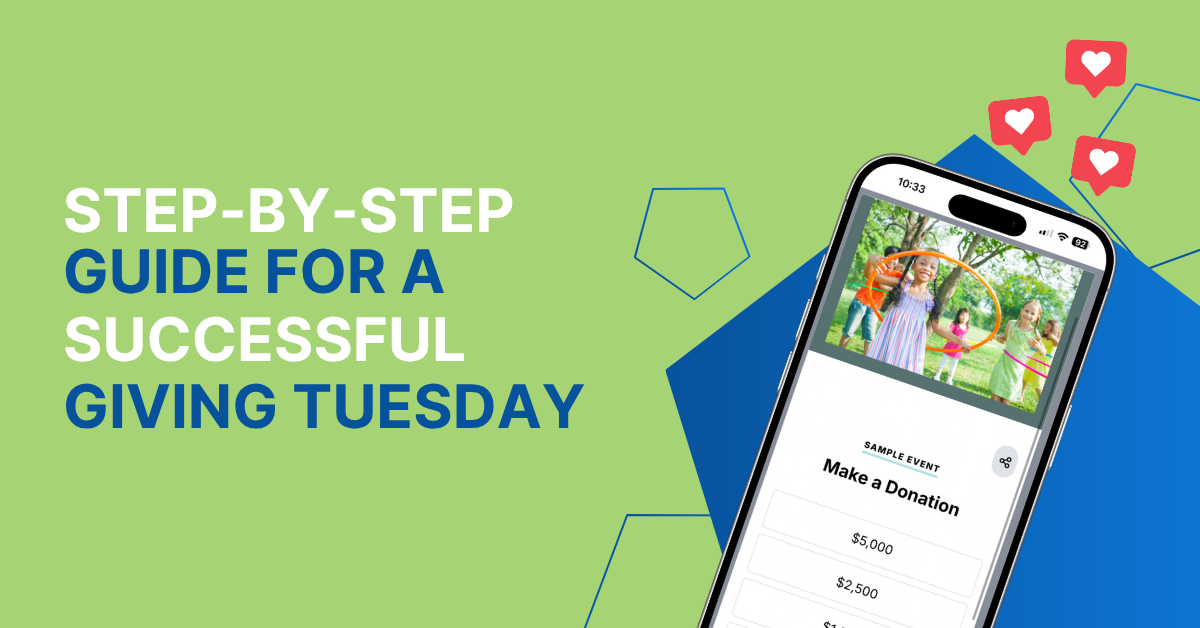
How to Create an Implementation Plan for New Nonprofit Tech
October 30, 2023Investing in new technology for your nonprofit opens up a wealth of possibilities. With the right tools, you can go from spending hours tracking down the right data to accessing it in minutes. Or, you can level up from confusing, disorganized fundraising events to streamlined auctions that excite and engage your guests.
But whether you’ve decided to invest in auction software or a new constituent relationship management (CRM) system, implementing new technology can be a challenge. That’s why it’s crucial to create a detailed implementation plan that will keep you on track and ensure the process goes smoothly. To do so, follow these steps:
- Define your priorities and goals
- Assemble your implementation team
- Create a timeline
- Outline a documentation and communication plan
We’ll cover each step in detail so you can make all the right preparations to embark on your technology journey with confidence. Let’s get started.
Define your priorities and goals
Start by thinking about why you chose this technology to begin with. Ask yourself these key questions:
- What motivated you to seek out and invest in a new system?
- Was there a pain point you needed to solve, or a standout feature your existing software didn’t have?
- In the best-case scenario, what will this software help you accomplish?
Use the answers to these questions to define your vision for your new technology. Outline what the software will do for you, which teams will benefit from using it, and what results you’d like to achieve in the long run. This will help your team and any external parties understand the reasoning behind the switch and your implementation’s key focus areas.
For example, say that you sought out marketing automation software because your team was spending too much time writing and sending emails that didn’t convert. You might decide that your goals for the new software are to reduce team time spent on email by 50% and improve your email marketing conversion rate by 10%. With these goals in mind, your implementation team prioritizes the software’s email automation features and spends less time on social media automation.
Assemble your implementation team
Once you’ve outlined your goals, determine who will take the lead on implementing your new technology and who else should be involved in the process. Depending on the scale of the implementation, you may need a large team or only a few key players.
At a minimum, your implementation team will likely include:
- Developers or IT staff. If you have IT staff, they should take the lead on the technical aspects of the implementation. If you don’t have any staff members with the necessary technical expertise, consider partnering with a third-party consultant who can handle everything. Look for someone who has expertise in the specific software you’re implementing for the best results.
- Nonprofit leadership. Key decision-makers at your organization should play an active role in the implementation process. They’ll need to approve any decisions involving your budget and oversee the handling of sensitive information like donor data. They should also be responsible for ensuring that the new technology aligns with your organization’s mission and goals.
- A nonprofit technology consultant. Complex systems like CRMs require more technical skills and product knowledge to implement successfully. That’s why many organizations choose to partner with nonprofit technology consultants who understand exactly how to help you reach your goals. These experts can handle complex processes like data migration and app customization, as well as guide you through the implementation from start to finish.
For larger organizations, consider including one staff member from each team that will be using the software, such as your fundraising and marketing teams. Make sure to outline specific roles and responsibilities for each team member, and take into account how much time each person will be able to commit to the implementation.
When hiring outside consultants, be sure to evaluate your existing resources and budget beforehand. Do research to discover which consultant would be the best fit, and consider seeking out technology grants for nonprofits that can cover software and implementation costs if needed.
Create a timeline
Next, estimate how long each aspect of your software implementation will take. Keep in mind that this is an important step regardless of your project’s scale—even if the software you’re implementing is more basic, you’ll still want to schedule time to add your data, fix any issues, and train your team before moving forward.
Break up your timeline into stages, and outline an estimated length of time for each stage. For example, Redpath’s Salesforce for Nonprofits implementation guide breaks up a Salesforce implementation into these five phases:
- Planning: The planning stage includes discussing goals with a Salesforce partner, deciding which tools to implement, and creating the implementation plan. This stage can take up to six weeks.
- Platform configuration: It often takes multiple months to set up the platform, integrations, and other add-on tools to your CRM. During this stage, you’ll also customize and configure the platform as needed.
- Testing: The testing stage can vary in length depending on how many rounds of testing and fixes are needed. Schedule time for at least a few rounds to ensure everything is working smoothly before you move to the next stage.
- Data migration: Migrating all of your data from one CRM to another is an extensive process, lasting from one to six months. Plan to mitigate any risks of data loss and check the quality of data after it’s migrated.
- Team training: Determine ahead of time how many team members will need to be trained to use the new software and what training resources come with the platform. Training could take days, weeks, or months depending on these factors.
Adjust your timeline based on the complexity of your software, any existing deadlines, and team member availability. For example, if you’re hosting a major fundraising event in December and will need to use your new software to send out event communications, plan your timeline so that every stage will be completed by November.
Try to set more generalized time periods rather than specific dates when possible. That way, you leave enough room to handle any unexpected hurdles that come up.
Outline a documentation and communication plan
Finally, plan how you’ll document your implementation process and communicate details to the rest of your team. Keeping accurate records of the implementation’s progress, issues, and training process will help you update and train anyone who gets added to the project later. You can also use these notes to guide future technology implementations.
To outline a communication plan, decide who will need to be informed about the technology and when. This might look like:
- Giving your board progress updates every two weeks. You might include a list of updates in board reports or give a short presentation about the project’s status in board meetings. Use resources like Kwala’s board report template to communicate these updates effectively.
- Announcing the new software to all staff at your next company-wide meeting. Plan to discuss the reasoning behind the move to a new system, and be prepared to listen to and address any feedback from team members.
- Letting event volunteers know about the switch a week before your auction. If volunteers will be using your new mobile bidding software at your upcoming event, give them an overview of the platform at a volunteer training session.
It also helps keep everyone on the same page if you outline how team members working on the implementation will communicate with each other. For instance, they might communicate via email on a daily basis and meet to discuss the project once a week.
Your implementation plan should provide a solid structure for your team to keep everyone on track, but it doesn’t have to be set in stone. Adjust the plan as you go along if you find that a certain stage is taking longer than anticipated or you run into bumps in the road. No matter what, you’ll have a solid foundation to guide you.
Get The Latest Updates
Subscribe To Our Monthly Newsletter
No spam, notifications only about new products, updates.
Become a subscriber
Subscribe to our blog and get the latest updates straight to your inbox.

